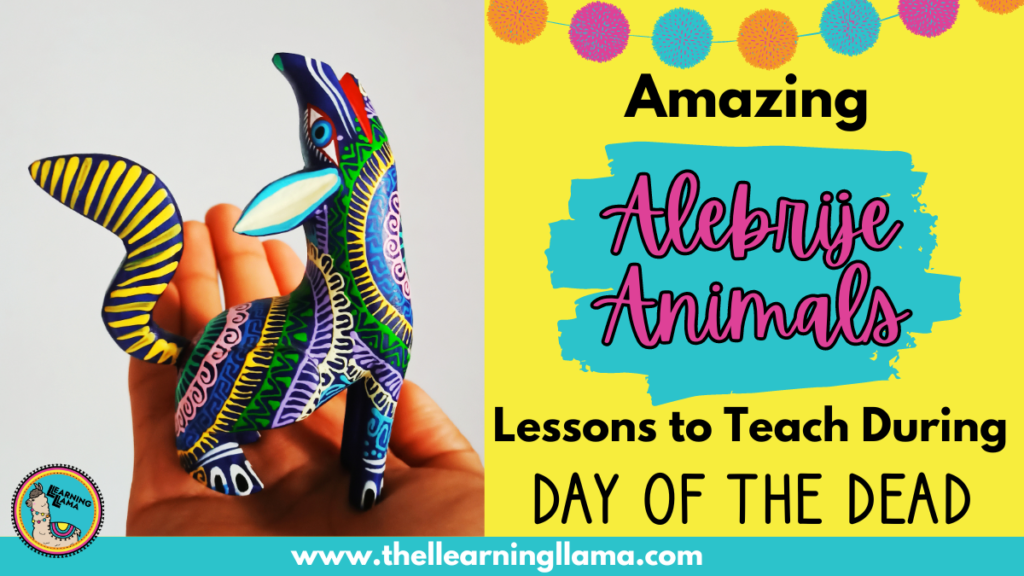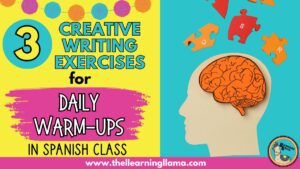Alebrijes animals are colorful, unique, and a beautiful Mexican artform. You can teach about alebrije animals at any time of the school year, but they have recently been associated with Day of the Dead because of the popular movie Coco! Keep reading to learn about my favorite lessons to teach about alebrijes. Your students will be immersed in the culture of these mythical creatures, use the target language to participate in communicative activities, and bring their creativity to life by creating their own alebrijes!
What is an alebrije?
Alebrijes are mythical creatures of Mexican folk art. They are brightly colored figures that combine multiple animals into one unique creature. Alebrijes were created by Pedro Linares in the 1940s. He was sick with a high fever and had hallucinations. During these hallucinations, he saw these fantastical creatures and heard them chanting the word “alebrijes” over and over again. Upon waking up, he created these alebrijes out of paper mache and turned them into a popular artform.
Alebrijes are not specifically associated with Día de muertos. They are an artform and creative expression. They were made popular by artists like Diego Rivera and Frida Kahlo. There is not a direct relation to Day of the Dead, but the movie Coco also shed light on these creatures in recent years. In relation to Day of the Dead, it is said that these creatures are spiritual guides that guide the ancestors on their journeys.
Before you keep reading, alebrijes are a creative artwork, and if you love adding art into your Spanish lessons, I would love to see you over in my Facebook Group: Art in Spanish Class. Like-minded Spanish teachers share authentic resources, activities, projects, and videos for incorporating art into any Spanish lesson! You’ll see tons of fun ideas like using alebrije projects, touring virtual museums, finding authentic paintings for any unit and more!
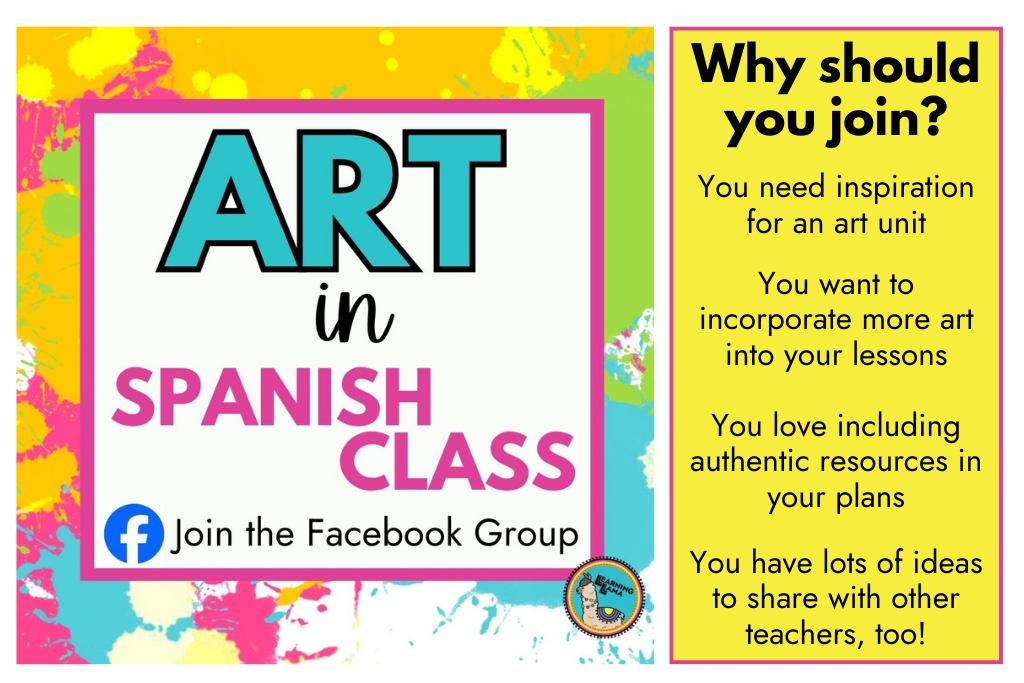
Grab Their Attention – Coco!
I’m sure that your students have asked to watch Coco on more than one occasion. Well, now is your chance to share this movie with them, or at least a clip! Since they are probably familiar with this movie, it is a great way to introduce the topic of alebrijes to them. It will make them feel a connection to the lesson from the get go! I began my lesson on alebrije animals with this one-minute clip. Dante, the dog transforms into an alebrije. I ask my students to describe what an alebrije is based on this clip. So, even if they never heard of the word “alebrije” before, this should help them visualize it and begin thinking about its significance.
The History of Alebrijes
Do you know the history of alebrijes? Why are they considered spiritual guides? How were they invented? It is important for your students to learn the history before they start creating their own, drawing alebrijes, and having lots of fun! Here is a brief video in English, but I love the visuals in this historical overview.
I also love reading this short story about the history of alebrijes. It comes in English or Spanish, and each version has 3 differentiated texts for learners of all levels! Plus, there are vocabulary activities, images to retell the story, and comprehension questions. It is a complete activity that requires zero prep from you! And your students will be engaged and intrigued to learn more!
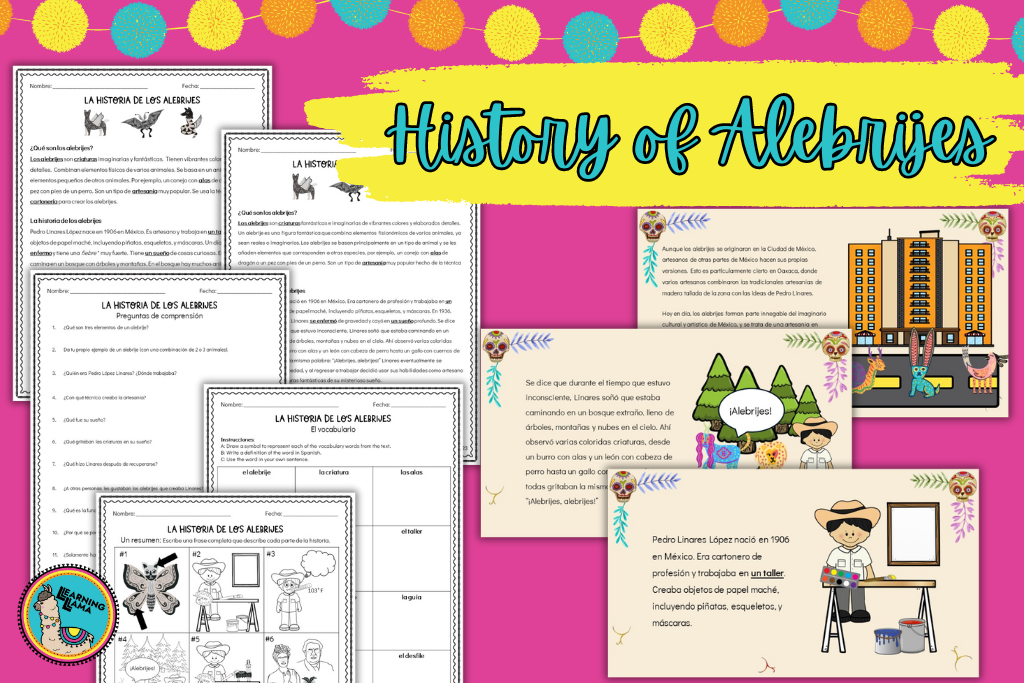
Connect To Personality Traits
Since alebrijes are combinations of different animals, we tend to try to interpret what these animals represent. Is it the head of a ferocious lion with the body of a sneaky snake? Or maybe an alebrije with the wings of an eagle and the tail of a pig? Think about the qualities you associate with each of these aforementioned animals. Which would represent you?
Essential Vocabulary
To start, I introduce a set of similar essential structures like: me interesa, me fascina, me representa, etc. It takes “me gusta” to a new level and shows that other verbs function in the same way. But you don’t have to do a full on grammar lesson. With these repetitive structures, students will acquire the language and new phrases in context.
You will also want to provide students with personality trait vocabulary. A complete list of words that describe a variety of personality types will be necessary. But don’t require students to utilize all words or even know them all. This list serves as a word bank for students to choose the words that describe their personality. They should be held responsible for the first list of words – me fascina, me representa, etc.
Personality Quiz: Which Alebrije Are You?
Who doesn’t love a fun personality quiz? Finding out which Friends character you are or which dessert matches your personality… we always want to know the results! So, have your students take a personality quiz to find out which alebrije matches their personality.
With this comprehensible 10-question quiz for novice high students, they will have fun answering questions and tallying their results. Students will read the results, work together in groups to interpret it, and teach their classmates about their results. Grab the quiz in English or Spanish so all of your students can take it!
If you like the idea of personality quizzes, learn how these quizzes enhanced my personality unit (and you’ll find 7 other fun quizzes just like this one!)
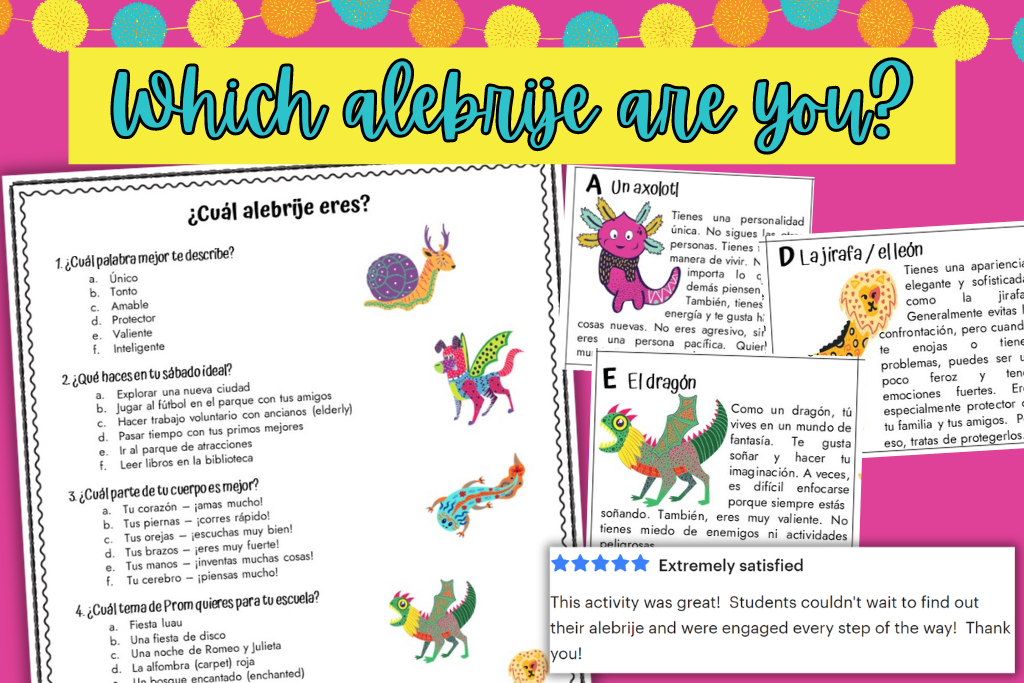
Describe and Draw an Alebrije
Once students understand what an alebrije is, it can be fun to draw them and practice the associated vocabulary. With a describe and draw activity, you can practice listening and reading interpretive tasks. Students could read written descriptions of alebrijes or listen as you describe them. Students then draw what they hear or read!
Now, reverse the roles for an info gap. Let students draw a unique alebrije and describe it to a classmate. The classmate will draw what they hear and compare their creation to the original!
Get a whole set of activities for describe and draw here.
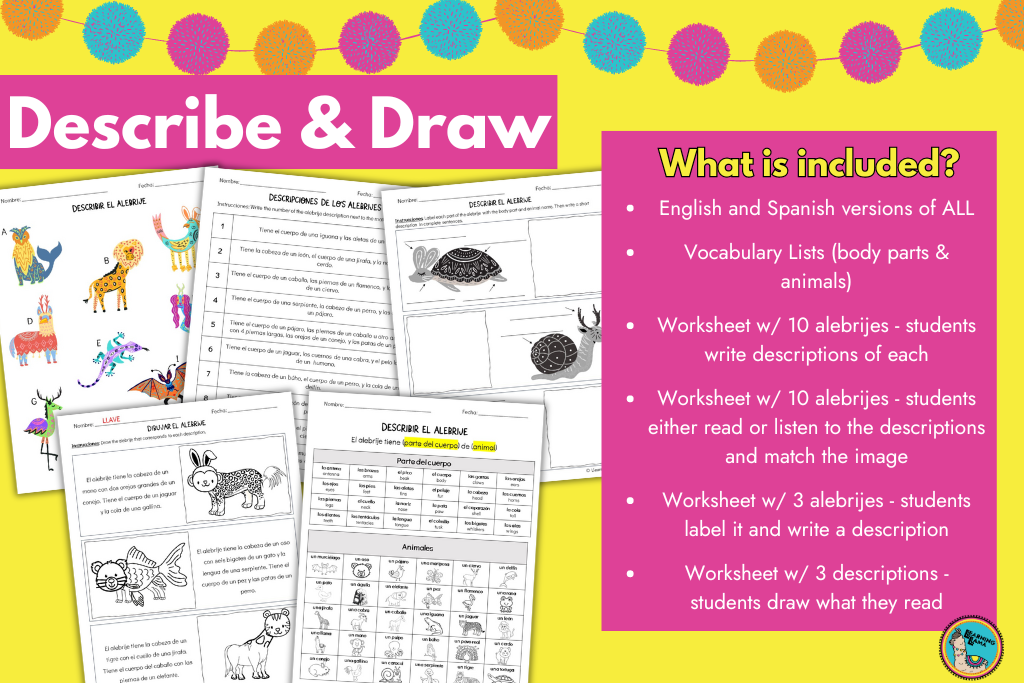
Design Your Own Alebrije
Draw It Out!
Part of the fun of alebrijes is that they are unique combinations of different animals. There is no right or wrong way to design alebrijes animals; it can be any creative combo! So, let your students’ imaginations run wild! Let them design an alebrije of their choice. It is best if the one they design reflects their personality so they can describe it well. You will need to provide them with some essential vocabulary terms: body parts and animals. As I mentioned before, they should not be held responsible for knowing all these terms, but it serves as a dictionary to avoid use of Google Translate or needing to look for words online.
With this product, students get all the necessary vocabulary already listed and differentiated versions of worksheets! Everything you need for a complete design your own alebrije project is here!
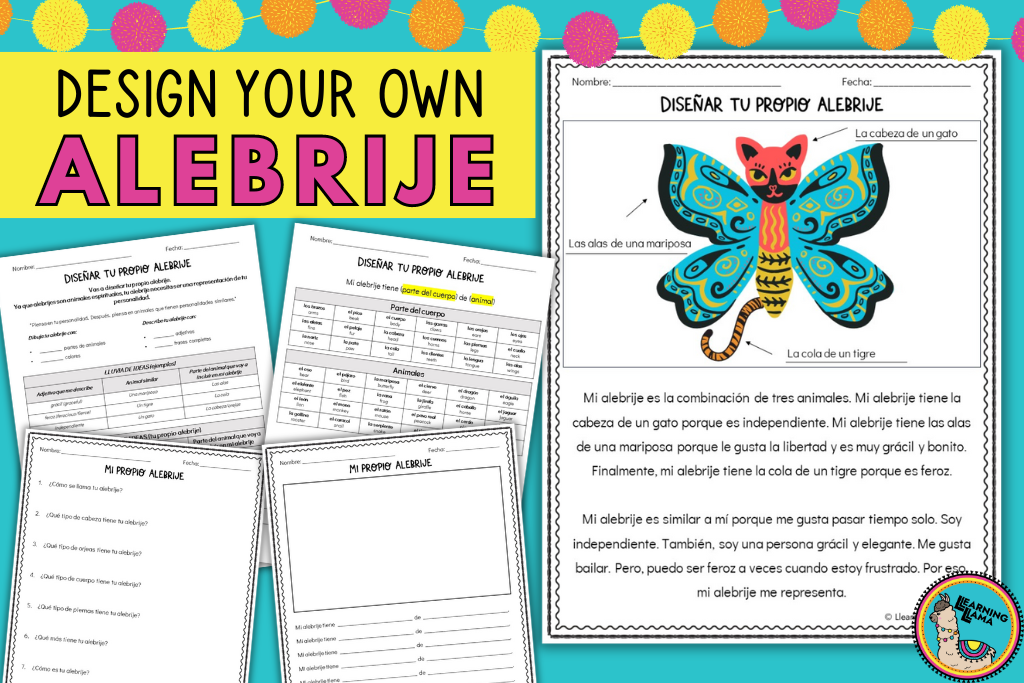
Create a Physical Alebrije
If you want students to make physical alebrijes animals, you could do one of these options: molding clay, play doh, foil, origami, etc. Some of these options are more cost-effective or feasible than others, so do what is best for you and your classes!
Bundle of Resources for Alebrije Animals
If you liked the activities that I mentioned, you can get this set of all 4 resources (bilingual products included) here. The history of alebrijes reading, personality quiz, describe and draw, and create your own alebrije are all included!
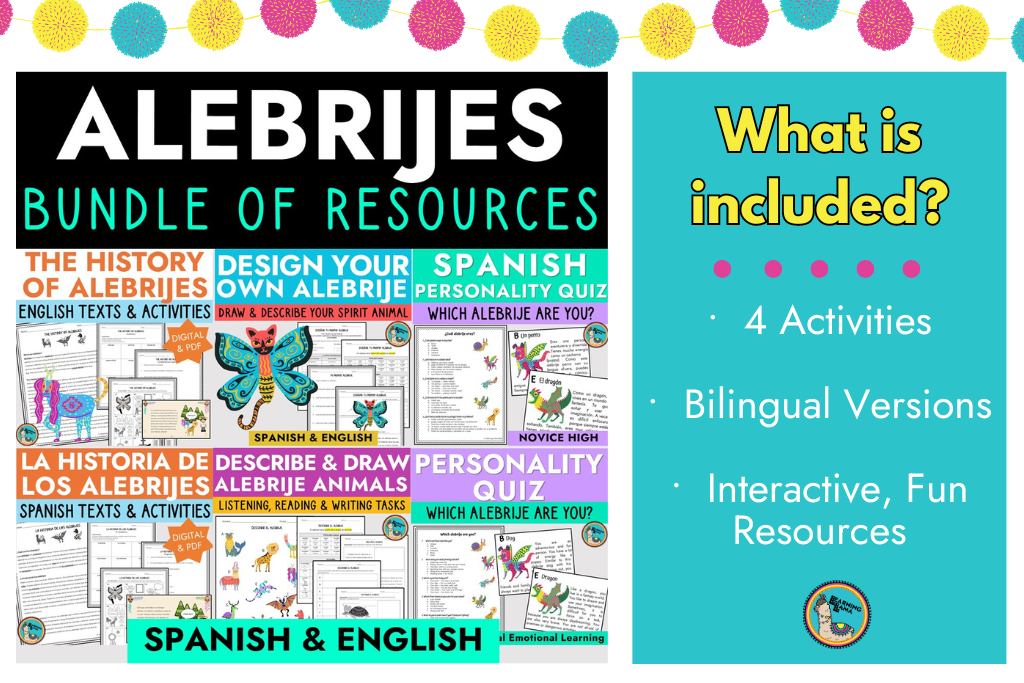
Additional Resources for Day of the Dead
Since alebrijes are semi-related to Day of the Dead, you may be looking for other resources for this time of year. Check out my other blog posts and products below:
Blog Posts
- Digital Día de muertos lesson that covers 6 elements of Day of the Dead
- Day of the Dead Spanish Vocabulary Lessons
- 7 Best Day of the Dead Books to Read with Your Students
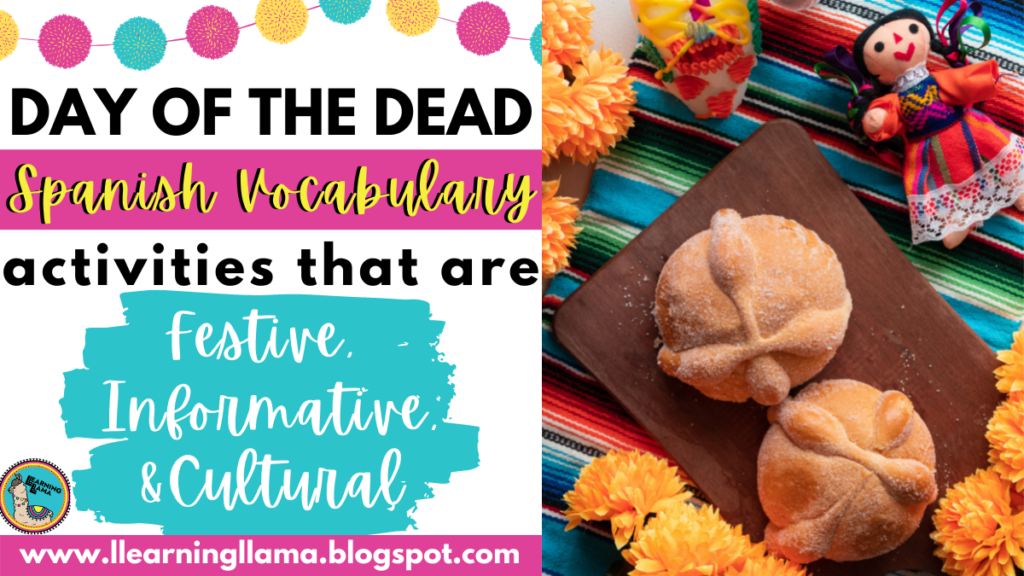
Day of the Dead Resources
- Escape Room (5 puzzles, including one related to alebrijes!)
- Create Your Own ABC Vocabulary Book (A is for alebrije!)
- History of the Marigold
- Legend of the Marigold
- Prepositions of Place with Day of the Dead Vocab
- Day of the Dead Choice Board
- 30 Day of the Dead Task Cards
- Day of the Dead Vocab Word Wall
With these resources, you can teach a complete, well-rounded lesson about alebrije animals. Your students will understand history, communicate in the target language, and unleash their creativity! I’d love to see pictures of your students’ artwork or physical alebrije creations. Feel free to comment below.

